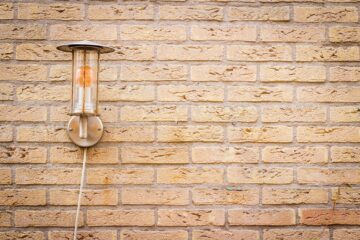Until today, the interior parts of the basement were never given the attention that was needed. In layman’s terms, it was left uncovered. Currently, the majority of modern basements are often covered with drywall to improve their aesthetic look. It’s possible to cover basement masonry walls with drywall provided that you install what’s commonly known as a vapour barrier as well as foam insulation. Similarly, you can paint your bare drywall to make it more attractive. While most people get in a fix when trying to select the best paint for their drywall basements, we have compiled guidelines that will lessen the whole process of basement painting. Whenever you want to paint the drywall of your basement, it’s advisable to apply a combination of primer and paint. On many occasions, a latex primer should be used when you’re dealing with basement drywall. However, it’s not completely insane to apply either alkyd or latex paint over the primer.
How To Paint A Basement Drywall
Masking And Draping
One major challenge that most likely you going to encounter while trying to paint the wall is the splattering of the paint. No matter how careful and professional you are when it comes to painting, this is one area that cannot be avoided easily. Things can be worse if you’re are a first-time painter. This, however, does not mean that this is something that’s completely out of control. It’s worth noting that you can take precautions to prevent paint from splattering on furniture as well as gorgeous carpeting. Since pieces of furniture, as well as carpets, are not heavy, it’s advisable to move them out of the basement before you start painting. If you have heavier items that cannot be carried easily, you should move them to the centre of the apartment and cover them. Using plastic in covering your items is recommended because it comes with additional protection. Consequently, it’s important also to protect your floor with the help of drop cloths. Scores of people make mistakes of going for cheap drop cloths that can be soaked by the paint more easily. If you want to prevent worsening the state of your floor, spending a few dollars to buy canvas drop cloths is not a big deal. If you’re working on a wall that features either a baseboard or a doorway that has mould, do not miss to cover it using painter’s tape. Ideally, don’t forget to press a putty knife along its entire length to prevent seepage.
Making Repairs
It’s a common thing for the walls to have dents, cracks together with paper tears and should be repaired. If you’re new in this field, it must be remembered that you can perform the three repairs with spackle, a material that can harden it dries up. Dealing with cracks is a bit involving and you’ll be expected to scrape away what’s referred to as flaking drywall pieces before applying spackle using a putty knife. Apply sand together with spackle to ensure that the cracks are completely covered. If the wall is dented, the procedure is slightly different and you’ll be required to fill the dent with spackle and sand it down. On rare occasions, the paper can tear away from the wall and therefore, trim away the torn piece before applying spackle over the area that was damaged.
Preparing The Wall
While this step can be skipped, it has a direct effect on the final appearance of your walls. This is one thing that cannot be underestimated unless you won’t come up with a horrible result. One reason why preparing the wall is important is to remove too much dust that’s not new on the vertical surface. Preparing the wall for painting follows a general cleanliness principle. However, you’ll be forced to roughen the surface of your wall using sandpaper if a gloss finish was initially used to paint the wall. In removing the majority of dust particles from the wall, it’s vital to vacuum the walls. Not to mention that you should wash the walls with soap and plenty of water to remove any trace of grease or dirt. In many basements where dryer cleaners or clothes washers are kept, moulds often develop more so when poorly ventilated. For better understanding, mould is usually a small green dot that forms on the wall. To remove mould, it’s recommended to wipe out the mouldy area using a mixture of ammonia-free detergent and bleach.
Priming And Painting
This is where we’re going to answer a question that was posed to us. That is the best paint for the basement drywall. Typically, priming as well as painting is not the hardest part of this job but knowing the best paint will ensure that you have a fine outcome. Both priming the wall and applying the paint are the two factors that will determine the attractive look of your basement. As pointed out earlier, a flat latex primer is one thing that cannot miss if you want to paint drywall. Flat latex is preferred in cleaning drywall because of the following reasons:
- It’s easy to clean up
- Dries quickly
- It comes at affordable prices
Always begin by painting around the edges of the wall before moving to the centre section for uniformity. While painting, only uses either a polyester or nylon paintbrush when applying the primer around the edges. Avoid using a bristle brush that comes with latex paint since it has the power of absorbing water in the paint something that can weigh down the brush. When painting the centre of your basement wall, often stick with Roller brushes that have standard size. Use either a polyester or nylon roller sleeve with a latex primer. You can still use Alkyd paint but the only challenge is that alkyd paint will take longer to dry and is more expensive than latex.
Wrap up
So there you have it, Latex and Alkyd are preferred when painting the basement drywall. The only problem is that the latter is expensive and takes more time to dry.
If you found this useful, check out our other painting tip articles to learn more about how to paint. If you are looking for a team of reliable painters and decorators in London, call us today for a free quote. We cover all of the London areas including Clapham, Battersea, Dulwich, Fulham, Crystal Palace and many more.


